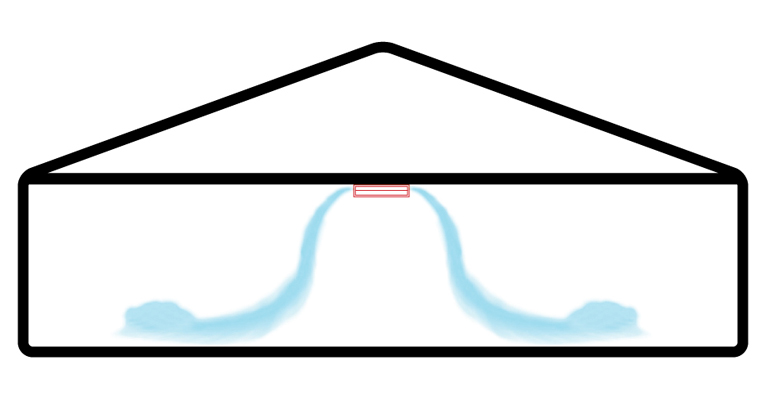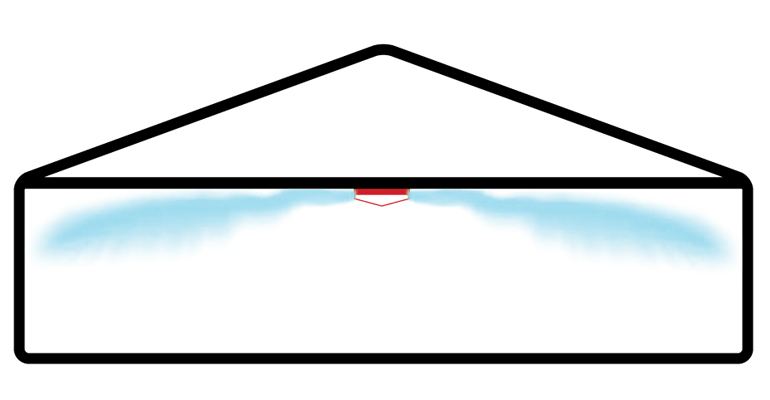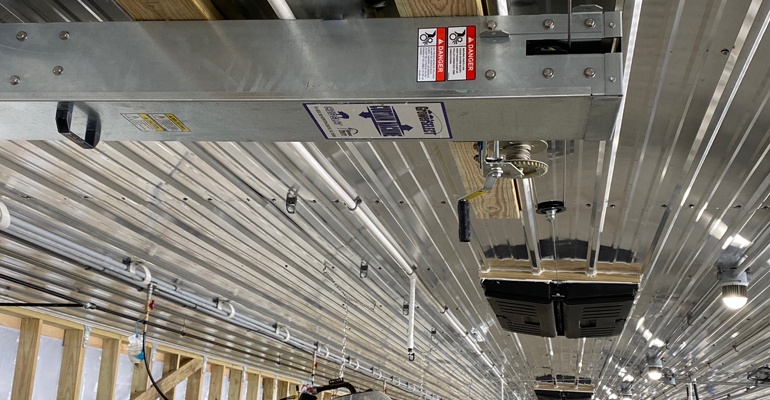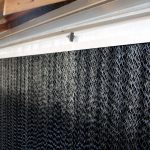The management of hot and cold weather ventilation is reasonably straightforward. Move enough air over the pigs in the summer to cool them. In the winter, we dial in the exhaust rate needed to maintain air quality and humidity without burning excessive heat.
Transition ventilation is the in-between period…when minimum ventilation is not enough air and the system has not switched to summertime airflow. It’s those days that bounce between lows in the 30s at night and the 70s in the afternoon.
We calculate the amount of transition ventilation needed to be about one-third of the maximum rate. For example, the maximum rate for a finishing pig is 120 cfm, meaning we need to provide 40 cfm for the transition period. Typically this cfm rate is staged from minimum to maximum with several smaller fans or one larger variable speed fan.
The management part of this transition phase is adjusting the air inlets to maintain a high-velocity air jet of 700 to 1,000 feet per minute. At this speed, the cool air sweeps across the ceiling mixing with the warmer room air before tumbling to pig level. If an inlet is too far open, the air enters at too low of speed, sinking to the floor without mixing, causing drafts.
Early ventilation systems used hand-operated baffles. The common method of managing the baffles was to set them in the morning during the coolest part of the day. As the day warmed up and fans started to cycle on, the static pressure increased inside the building. If possible, the herdsmen would open the baffles during the middle of the day and try to remember to shut the baffles down as the day cooled down and the fans switched off.
Gravity actuated inlets represent the second generation of air inlets. These inlets use a weight or spring to counterbalance an inlet baffle or vane that opens with increasing static pressure. While a big improvement over manual inlets, these passive inlets required manual adjustment during the transition period.

Low airspeeds can cause drafts at floor level during cold weather.
One of the inherent flaws of gravity flow inlets is their inability to deliver the needed high-velocity air at minimum ventilation if there are too many inlets. For instance, in a 1,000 finishing building, the transition cfm requirements would be 40,000 cfms. It would take 20 of the commonly used 2,000 cfm quad inlets to satisfy this demand. During minimum rates with weaned pigs, the ventilation is now 3,000 cfms, meaning each inlet only needs to supply 150 cfms. The result is low-speed air streams that do not mix with the surrounding room air causing uneven air distribution.
The way to correct this is to close down some of the inlets. If we take the minimum cfm rate of 3,000 and divide it by 500 cfm, it would take six ceilings inlets. We would open six of the inlets and shut down the other 14 inlets. The problem would be the building operator would need to open additional inlets as the temperature warmed. While good management would allow this system to function well, it is less than ideal.

Automated inlets maintain high airspeeds to prevent drafts at floor level.
An automated system represents the third generation of air inlets. A mechanical actuator, tied in with a whole house controller, automatically adjusts the inlets’ opening to match the operating fans. No matter how fast weather conditions change outside, the incoming air’s speed remains high, reducing drafts. Also, the automated system can close the ceiling inlets when the building goes into tunnel, preventing hot attic air from being pulled into the room.

The actuator automatically adjusts inlets to changes in the ventilation rate.
The trade-off is in the higher cost of the actuated system versus the gravity inlets. The automated system will add $2,500 to $3,500 to a building’s installed cost for the inlets, not including any upgrades to the house controller.


